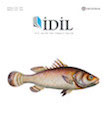MÜZE-İZLEYİCİ İLETİŞİMİNDE YENİ BİR PARADİGMAYA DOĞRU: KATILIM PRATİKLERİNİN DEĞİŞİMİNDE SOSYAL MEDYANIN ROLÜ
TOWARDS A NEW PARADIGM IN MUSEUMAUDIENCE COMMUNICATION: THE ROLE OF SOCIAL MEDIA IN CHANGING PARTICIPATION PRACTICES
Author(s): Duygu Atalay Şimşek, Mehmet NuhoğluSubject(s): Museology & Heritage Studies, Media studies, Communication studies, Theory of Communication
Published by: Sanat ve Dil Araştırmaları Enstitüsü
Keywords: Museum; Social Media; Communication; Participation; Publicity; Audience;
Summary/Abstract: The field of communication, which has started to transform rapidly with the technological developments in the 21st century, has also greatly influenced the discipline of museology, one of the main goals of which is communication with the society. This transformation, which encompasses every field, has also affected the way the audience consumes art and culture, has created a new form of communication in which the museum and the audience feed each other bilaterally through social media, and has also changed the context of museum-audience communication. Social media, which created a new space apart from the physical space of the museum, allowed many applications that could not be realized in the physical space of the museum. This new form of communication established by museums with social media has actually shaped the orientation towards a new museology paradigm. The aim of this study is to examine the effect of social media, which has emerged as a new form of communication, on participatory practices in museum audience communication and to explain the mentioned change with examples from applications in various museums. As a result, it has been seen that social media, with its structure that allows for a two-way active communication, creates alternative new forms of participation to museum participant practices. These forms of participation are classified into three basic categories as "creating participatory communities", "contribution to publicity" and "co-production". In addition, attention was drawn to the bipolar participation structure that emerged from the participatory activities carried out by the museum on the one hand and the audience on the other. In other words, it has been pointed out that participation through social media takes place in the form of activities designed by the museum with a participatory and the audience's direct participation in various ways of their own will.
Journal: İdil Sanat ve Dil Dergisi
- Issue Year: 12/2023
- Issue No: 108
- Page Range: 1069-1081
- Page Count: 13
- Language: Turkish

